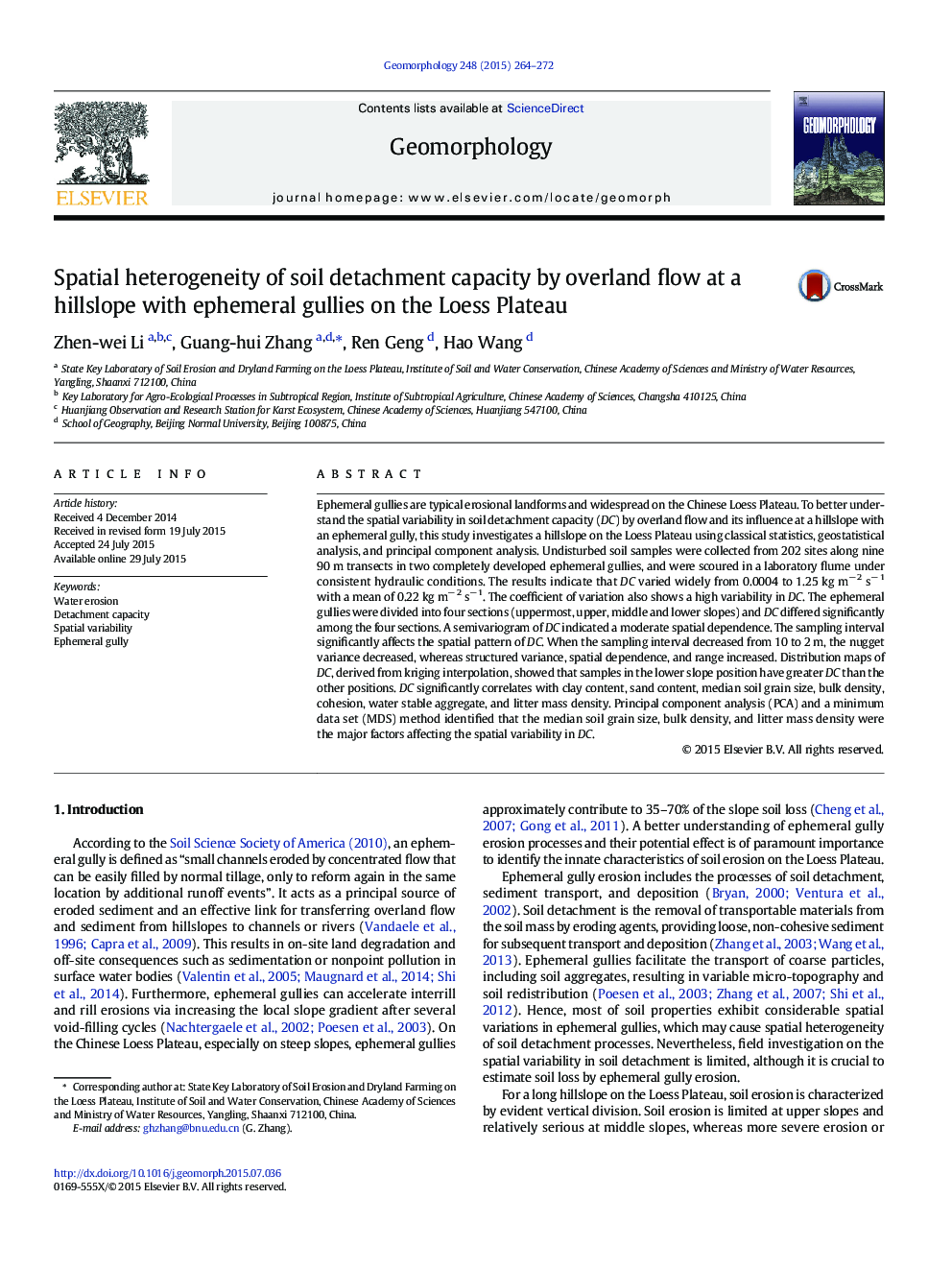| Article ID | Journal | Published Year | Pages | File Type |
|---|---|---|---|---|
| 6432064 | Geomorphology | 2015 | 9 Pages |
â¢Detachment capacity at ephemeral gully developed hillslope had a strong variability.â¢Hillslope positions significantly affect the distribution of soil detachment capacity.â¢Sampling interval had a great effect on the spatial patterns of detachment capacity.â¢Principal factors responsible for the variation in detachment capacity were identified.
Ephemeral gullies are typical erosional landforms and widespread on the Chinese Loess Plateau. To better understand the spatial variability in soil detachment capacity (DC) by overland flow and its influence at a hillslope with an ephemeral gully, this study investigates a hillslope on the Loess Plateau using classical statistics, geostatistical analysis, and principal component analysis. Undisturbed soil samples were collected from 202 sites along nine 90 m transects in two completely developed ephemeral gullies, and were scoured in a laboratory flume under consistent hydraulic conditions. The results indicate that DC varied widely from 0.0004 to 1.25 kg mâ 2 sâ 1 with a mean of 0.22 kg mâ 2 sâ 1. The coefficient of variation also shows a high variability in DC. The ephemeral gullies were divided into four sections (uppermost, upper, middle and lower slopes) and DC differed significantly among the four sections. A semivariogram of DC indicated a moderate spatial dependence. The sampling interval significantly affects the spatial pattern of DC. When the sampling interval decreased from 10 to 2 m, the nugget variance decreased, whereas structured variance, spatial dependence, and range increased. Distribution maps of DC, derived from kriging interpolation, showed that samples in the lower slope position have greater DC than the other positions. DC significantly correlates with clay content, sand content, median soil grain size, bulk density, cohesion, water stable aggregate, and litter mass density. Principal component analysis (PCA) and a minimum data set (MDS) method identified that the median soil grain size, bulk density, and litter mass density were the major factors affecting the spatial variability in DC.
